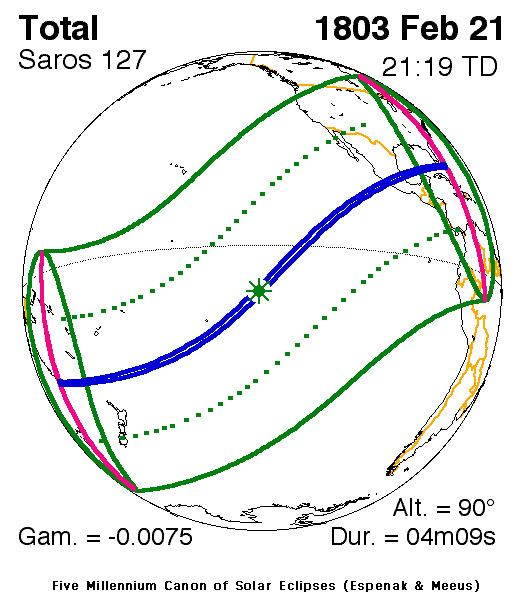Nature Total Magnitude 1.0492 Max. width of band 163 km (101 mi) Date 21 February 1803 | Gamma -0.0075 Duration 249 sec (4 m 9 s) Greatest eclipse 21:18:46 | |
 | ||
Other Instances Solar eclipse of April 8 - 2, Solar eclipse of July 2 - 20, Solar eclipse of August 2, Solar eclipse of March 9, Solar eclipse of March 20 | ||
A total solar eclipse occurred on February 21, 1803. A solar eclipse occurs when the Moon passes between Earth and the Sun, thereby totally or partly obscuring the image of the Sun for a viewer on Earth. A total solar eclipse occurs when the Moon's apparent diameter is larger than the Sun's, blocking all direct sunlight, turning day into darkness. Totality occurs in a narrow path across Earth's surface, with the partial solar eclipse visible over a surrounding region thousands of kilometres wide. The eclipse was visible in Pacific Ocean and Central America, while the totality was seen in Mexico.
References
Solar eclipse of February 21, 1803 Wikipedia(Text) CC BY-SA
